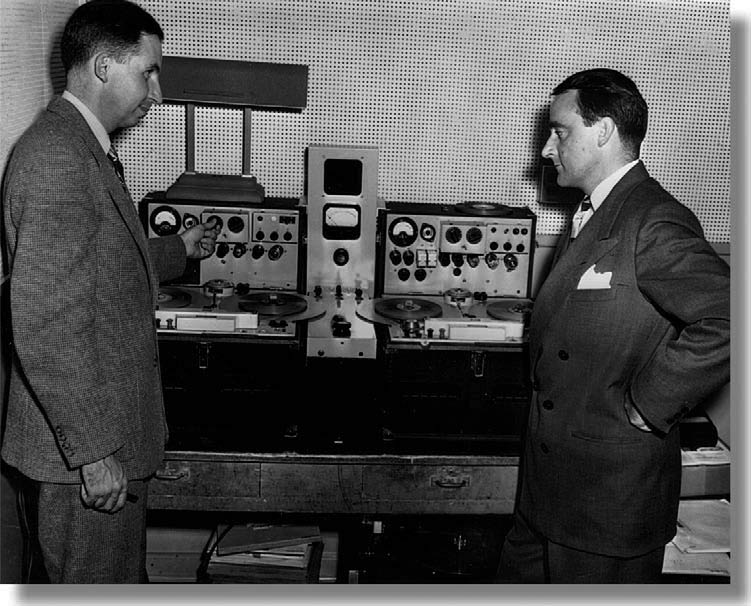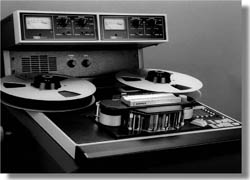This article is the first half in our series on the analog tape recorder, excerpted from Huber & Runstein’s book Modern Recording Techniques, Seventh Edition. For the second half, click here.
From its inception in Germany in the late 1920s and its American introduction by Jack Mullin in 1945 (Figure 1), the analog tape recorder (or ATR) had steadily increased in quality and universal acceptance to the point that professional and personal studios had totally relied upon magnetic media for the storage of analog sound onto reels of tape.
With the dawning of the project studio and computer-based DAWs, the use of two-channel and multitrack ATRs has steadily dwindled to the point where no new analog tape machine models are currently being manufactured.
In short, recording to analog tape has steadily become a high-cost, future-retro, “specialty” process for getting a certain sound.
This being said, the analog recording process is still highly regarded and even sought after by many studios as a special sonic tool … and by others as a raised fist against the onslaught of the “evil digital empire.”
Without delving into the ongoing debate of the merits of analog versus digital, I think it’s fair to say that each has its own distinct type of sound and application in audio and music production.
Although professional analog recorders are usually much more expensive than their digital counterparts, as a general rule, a properly aligned, professional analog deck will have a particular sound that’s often described as being full, punchy, gutsy and “raw” (when used on drums, vocals, entire mixes or anything that you want to throw at it).

In fact, the limitations of tape are often used as a form of “artistic expression.” From this, it’s easy to see and hear why the analog tape recorder isn’t dead yet … and probably won’t be for some time.
To 2-Inch Or Not To 2-Inch?
Before we delve into the inner workings of the analog tape recorder, let’s take a moment to discuss ways in which the analog tape sound can be taken advantage of in the digital and project studio environment.
Before you go out and buy your own deck, however, there are other cost-effective ways to get “that sound” on your own projects.
For example:
- Make use of plug-ins that can emulate (or approximate) the overdriven sound of an analog tape track.
- Rent a studio that has an analog multitrack for a few hours or days. You could record specific tracks to tape, transfer existing digital tracks to tape or dump an entire final mixdown to tape.
For the cost of studio time and a reel of tape, you could inject your project with an entirely new type of sound (you might consider buying a single reel of multitrack tape that can be erased and reused once the takes have been transferred to disk).
- Rent an analog machine from a local studio equipment service. For a rental fee and basic cartage charges, you could reap the benefits of having an analog ATR for the duration of a project, without any undue financial and maintenance overhead.
A few guidelines should also be kept in mind when recording and/or transferring tracks to or from a multitrack recorder:
- Obviously, high recording levels add to that sought-after “overdriven” analog sound; however, driving a track too hard (hot) can actually kill a track’s definition or “air.” The trick is often to find a center balance between the right amount of saturation and downright distortion.
- Noise reduction can be a good thing, but it can also diminish what is thought of as that “classic analog sound.” Newer, wide tape width record- ers (such as ATR Services’ ATR-102 1-inch, two-track and the 108C 2-inch, eight-track recorder), as well as older 2-inch, 16-track recorders, can provide improved definition without the need for noise reduction.















